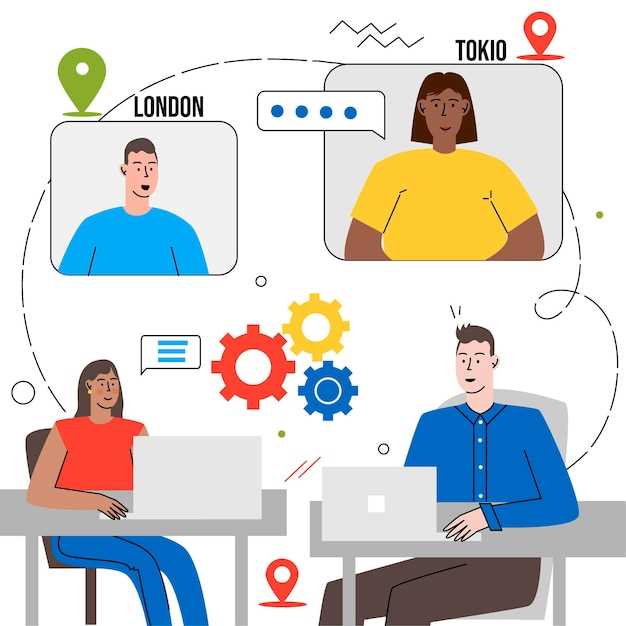
In the modern business landscape, the way in which teams operate has drastically evolved. With the rise of telecommuting and virtual collaborations, the traditional methods of supervising employees have been transformed. In this article, we will explore innovative approaches for overseeing and guiding individuals who are situated in different locations.
Leading a team spread across various geographic locations presents unique challenges that require creative solutions. Communication, project management, and team cohesion are critical aspects that must be addressed in order to ensure the success of remote workgroups. By employing the right strategies and utilizing the appropriate tools, leaders can effectively manage their dispersed teams and achieve desired outcomes.
Effective Communication Strategies for Virtual Teams
In order for distributed groups to work efficiently and effectively, it is crucial to establish strong communication practices. Clear and consistent communication is the key to building trust, fostering collaboration, and ensuring that everyone is on the same page.
Establish Regular Check-ins

One way to maintain open lines of communication within virtual teams is to schedule regular check-ins. This can be done through video calls, conference calls, or messaging platforms. By having frequent touchpoints, team members can stay connected and informed about project progress, challenges, and updates.
Utilize Various Communication Channels
Another important aspect of communication in virtual teams is using a variety of channels to convey information. Whether it’s email, instant messaging, project management tools, or video conferencing, having multiple ways to communicate allows for flexibility and ensures that messages are received in a timely manner.
| Communication Strategy | Benefits |
|---|---|
| Regular Check-ins | Enhances team cohesion and alignment |
| Utilize Various Communication Channels | Improves accessibility and responsiveness |
Ensure clear communication guidelines are established

It is essential to set up transparent communication protocols within your distributed team to ensure clarity and efficiency in exchanging information. By establishing clear guidelines for communication, team members will have a better understanding of how to interact with one another, leading to smoother collaboration and improved overall productivity.
| 1. Define Communication Channels: | Clearly outline which platforms or tools should be used for different types of communication, such as project updates, team meetings, or casual conversations. |
| 2. Establish Response Time Expectations: | Set expectations for how quickly team members should respond to messages or emails to maintain prompt communication and avoid delays in projects. |
| 3. Encourage Active Listening: | Emphasize the importance of active listening during virtual meetings to ensure that all team members feel heard and understood. |
| 4. Foster Open Communication: | Create a culture of openness where team members feel comfortable expressing their ideas, concerns, and feedback without fear of judgment or reprisal. |
Utilizing Project Management Tools for Distributed Teams
Effective collaboration and coordination among geographically dispersed teams is crucial for the success of any project. In the current digital age, utilizing project management tools can greatly enhance the efficiency and productivity of distributed teams. These tools help remote team members stay connected, organized, and aligned towards common goals.
Project management tools provide a centralized platform for remote team members to communicate, share files, track progress, and manage tasks in real-time. With features such as task assignment, deadlines, milestones, and progress tracking, these tools enable remote teams to collaborate seamlessly, regardless of their physical location.
By integrating project management tools into the workflow of distributed teams, team leaders can foster better communication, improved transparency, and increased accountability. These tools also help in identifying potential bottlenecks, monitoring individual performance, and ensuring timely delivery of project milestones.
Choose the appropriate solutions for your team’s requirements
When it comes to equipping your workforce with the right resources to enhance collaboration and productivity, it’s essential to carefully select the tools that align with your team’s unique needs and preferences.
Determine your team’s preferences
Before making a decision on which solutions to implement, take the time to understand your team’s working style, communication preferences, and specific requirements. By having a clear understanding of what your team values and needs, you can choose tools that will seamlessly integrate into their workflows and enhance their overall experience.
| Consideration | Recommendation |
|---|---|
| Collaboration Needs | Choose platforms that allow for real-time collaboration, file sharing, and project management. |
| Communication Preferences | Opt for tools that support multiple communication channels, such as video conferencing, instant messaging, and email. |
| Remote Work Accessibility | Ensure that the tools chosen are accessible and user-friendly for remote team members. |
Test and Evaluate
Once you have identified the tools that best suit your team’s needs, it’s essential to test them out and gather feedback from your team members. This will help you evaluate the effectiveness of the chosen solutions and make any necessary adjustments to ensure seamless integration and optimal performance.
Implementing Team Bonding Activities in Distributed Work Environments
Successfully fostering connection and camaraderie among colleagues is essential for promoting collaboration and productivity in dispersed team settings. In this section, we will explore creative ways to cultivate a strong sense of unity and cohesion among team members who work remotely.
One effective approach to nurturing team spirit in virtual work environments is to organize regular virtual team-building activities. These activities can range from online games and quizzes to virtual coffee breaks or happy hours. By providing opportunities for team members to engage in fun and lighthearted interactions, remote teams can strengthen their relationships and build trust, despite not being physically together.
Another strategy to enhance team bonding in remote work settings is to encourage team members to share personal stories, interests, and hobbies. This could involve creating dedicated chat channels or discussion forums where team members can post about their experiences, favorite books, or recent travels. By fostering a sense of personal connection among colleagues, remote teams can create a more supportive and inclusive work environment.
